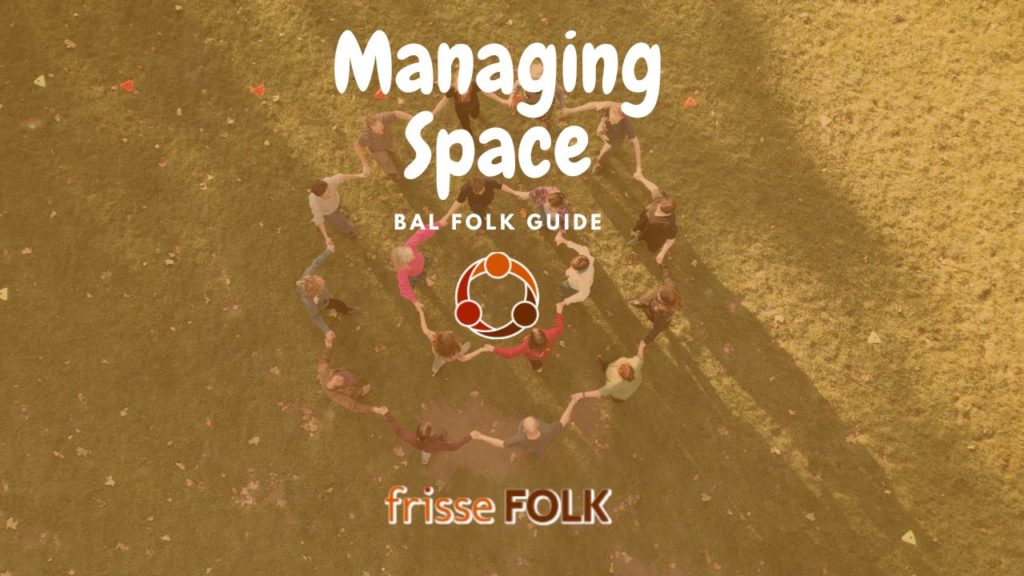Ruimtegebruik op de dansvloer optimaliseren
Versie 7 maart 2024
Koen Dhondt – Frisse Folk
General recommendations
- Try to contribute actively to optimise the dance space for everybody. Think and act in the interest of the collective
- The dance floor is for dancers. Give them a maximum of space when you don’t dance!
- Avoid bumping into others or blocking their way
- If you bump into someone, react appropriately: make eye contact, check if they are OK, apologise verbally or nonverbally
- Be aware of your own and other’s blind spots at all times
- Adapt your dance to the available space
- Be attentive in the setup phase of a dance. Dancers usually need more space than the mere surface they occupy in their starting position, so don’t squeeze in too close.
- With the exception of chain dances, avoid joining collective dances that have already started. If you do want to join anyway, reflect on the impact you will cause, then choose the ideal spot and moment.
- Group dances that are already set up: ask if (and where) you can join, at least nonverbally. Small circles that grow too much increase the risk of collisions with neighbour circles
- If the dance floor is already full, don’t join. Sometimes you can improve the situation by gently asking the public to go backwards to free up extra space.


